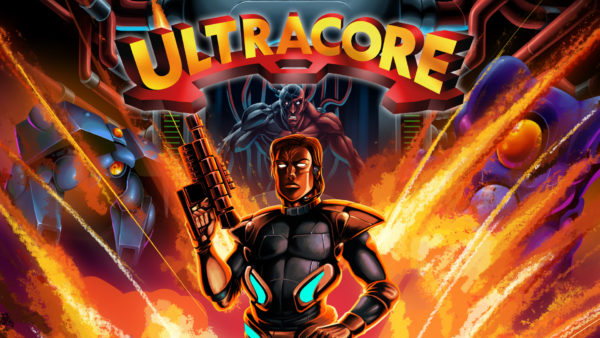
Growing up during the “console wars” between the Super Nintendo and the Sega Genesis (Mega Drive as known in outside of America) I used to gravitate to the Sega Genesis since its games appealed more to me. I liked the SNES but the Genesis has a special place in my heart, with games like Sonic, Rocket Knight, and Altered Beast, just to list a few of my favorites off the top of my head. Lately there has been a boom for retro games appearing in modern consoles, and Ultracore is one of them. For game preservation, it’s great since canceled projects can get a chance to show their innovations or their unique vision on a genre in specific, but can Ultracore be relevant by today’s standards? Let’s find out.
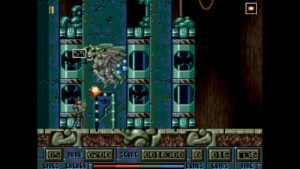
One word of warning, Ultracore was made in an era in which there weren’t any tutorials or anything like that. You boot the game and get ready for action, so it’s like the meme “I don’t know who I am nor why I am here, all I know is that I need to shoot everything in sight”. With that out of the way let’s talk about how the game plays. First, let’s talk about the controls, you jump with B, shoot with Y, use X to cycle between your weapons, A is used to interact with objects like levers, and use either the d-pad or the left stick to move. Now, while playing the game using this scheme I wonder what would’ve happened to this game if it was released during the console lifespan. My guess is that it wouldn’t do that well. You see, unlike games like Contra where you shoot diagonally and if you release the diagonal input your character continues shooting forward, in Ultracore when you release the diagonal input, instead of returning to the initial position, your character is stuck shooting diagonally or whatever other position you chose. This makes the original control scheme complicated to use and makes it difficult to both maneuver and shoot enemies in all directions, and it can be frustrating to play this way. Luckily, a quality of life improvement was added, and I feel this is the best way to play, the ability to use the Right Stick. When using the right stick your character shoots automatically in any direction you choose, and it functions like a twin-stick shooter. For me, this is a godsend; it helps improve the experience a lot. Using the stick scheme doesn’t change the functions of the other buttons already explained, but it gives you the option to use the R button to jump instead of just B, and feels natural once you have grown accustomed to it.
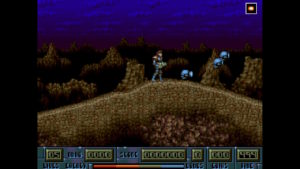
Another thing I really liked about Ultracore is that it’s not a linear game like the rest in the genre (by the standards of the era it was developed). In those games, you run from point A to B until the stage was cleared and, while fun, it added nothing new to the tried and true formula. In Ultracore you don’t get any pointers telling you where to go so you get to explore each area in a fashion similar to a Metroidvania. I like the sense of exploration and the sense of not knowing what you are going to discover, it’s why I love the Metroidvania genre in particular and seeing some sort of exploration in a run and gun game is, to me, good to see. The game also has some secrets hidden in the stages like shields that make you invincible for a period of time, or hearts to regain your health; as such, it’s cool to find them without expecting to. Another clever development idea is that sometimes you need to use everything at your disposal to beat the stage. For example, in the second stage you need to jump between some platforms and activate a switch that will make one platform move from left to right. Once you’re on it, you need to crouch to get to the other side; just above you there are some turrets and if you are trigger happy (like I was) you will shoot them. However, that’s a mistake because you cannot make the jump you need to make in order to get to the platform above since you needed to use the turrets to get to that platform. Yep, you can jump on enemies to get to higher places, but you must be fast since your jumps damage them, this is just one example of the mechanics Ultracore has.
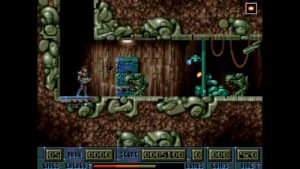
I like how the game looks. The difficulty might seem unfair for some since you only get five lives and three continues, and on top of that it has no save system. We’ve returned to the era of passwords, after each stage is beaten you get your statistics on the stage and a password to continue once you get tired of dying. Oh, and you also have to beat each level within a set time limit and once that timer is up, you lose a life. You can find items to increase your timer hidden in each stage, so that is something at least. The game offers 5 stages and like other games of the era, once beaten there isn’t much replay value. If you are a completionist and like to see everything each stage has to offer there are reasons to replay, but if not, once you’re done, you’re done.
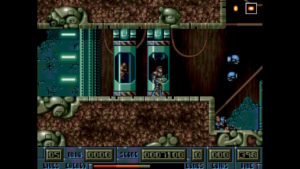
Now with all this being said, we return to our opening question, is Ultracore relevant by today’s standards? I would say yes, IF you’re the target audience, if you’re a retro enthusiast and a collector. Ultracore is a game you should not miss, the physical version is limited to three thousand units. It has all the notes and highlights of a bygone era that plays great if you play it like a twin-stick shooter. If you’re more of a casual gamer Ultracore could be too hardcore or old school for you, so you should get your run and gun fix somewhere else.
A review code was kindly provided for this review.
Reviewed on Nintendo Switch
Available for Nintendo Switch, PlayStation Vita and PlayStation 4
In addition, for access to an extensive variety of active retro gaming groups on Facebook, visit Retro Gamers Hub.

